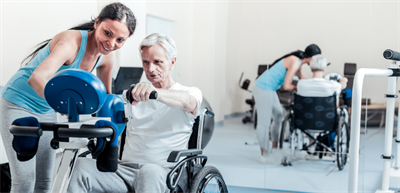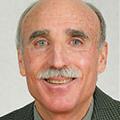David Flench, MBA, ACSM-CEP, EIM2, and Brad A. Roy, Ph.D., FACSM |
May
22, 2020
 Medically integrated fitness centers feature enhanced professional expertise and programming necessary to safely and effectively assist people, especially those with chronic disease and multiple health risks. These centers focus on providing the resources to improve and maintain a healthy lifestyle through a balanced combination of physical activity, proper nutrition, stress management and wellness education. While safety and cleanliness were often already high priorities for medical fitness centers, the COVID-19 pandemic has significantly brought those issues further into the forefront, along with other issues which must be considered as facilities re-open to their communities. Proper planning is essential to successfully navigating this unique time.
Medically integrated fitness centers feature enhanced professional expertise and programming necessary to safely and effectively assist people, especially those with chronic disease and multiple health risks. These centers focus on providing the resources to improve and maintain a healthy lifestyle through a balanced combination of physical activity, proper nutrition, stress management and wellness education. While safety and cleanliness were often already high priorities for medical fitness centers, the COVID-19 pandemic has significantly brought those issues further into the forefront, along with other issues which must be considered as facilities re-open to their communities. Proper planning is essential to successfully navigating this unique time.
Thoughtful discussions among management and medical leadership should occur to develop plans for re-opening. Plans should include the following:
- Requirements to initiate re-opening, including national, state, local and organizational criteria, as well as the timelines of phases, to coincide with those criteria.
- Communication strategy.
- Notifications to staff, members and the community, before and during the re-opening, via channels such as email, social media, websites and text SMS messages.
- Additional signage, including requirements for entry screening, mask wearing, distancing and equipment cleaning.
- Cleaning plans, including additional/new cleaning stations, supplies and procedures. Extra staffing should be considered to ensure all equipment and surfaces are being disinfected at frequent intervals.
- Process to be followed should a COVID-19 exposure occur within the facility.
- Employee considerations, such as education on COVID-19, use of PPE (masks, gloves), environmental changes (plexiglass barriers, removing items that are not cleanable), distancing rules at workstations and for member appointments, work from home and virtual meetings.
- Membership and billing. Consider allowing a way for members to freeze their account, suspending new memberships and guest passes initially to focus on existing members and expanded financial assistance options.
- Programs and services that should be considered for temporary closure during the initial phases of re-opening:
- Programs for children, including childcare, kids’ camps where small groups and social distancing are not possible and swimming lessons.
- Clinical fitness programs and services for conditions such as cardiac, Parkinson’s, prenatal, cancer and other high-risk populations.
- Sports that involve close proximity and contact, such as basketball and racquetball.
- Capacity and distancing monitoring. Although the minimum of six-foot distancing would be 36 square feet per member, many facilities are taking the distancing even further, up to 225 square feet per member, to account for increased respiration and movement while exercising.
- Specific rooms and areas that can create the greatest challenges to distancing include steam rooms, saunas, hot tubs, locker rooms and group exercise class studios, all of which should be considered for temporary closure during the initial phases of re-opening.
- Reservation systems for classes and programs should be used when possible to control capacity.
- Virtual options should be incorporated for programs such as group exercise, personal training, nutritional counseling and health education.
The landscape in the COVID-19 pandemic continues to change almost daily. Your response and planning will need to continue along side of that throughout all phases of your re-opening. Developing a plan is the first step to success, while implementing it and monitoring it for revisions must be done for achieving the ongoing accomplishment of your organizational goals.
Download this information as an infographic
Centers for Disease Control and Prevention, Coronavirus (COVID-19)
Medical Fitness Association COVID-19 Resources
Access more COVID-19 resources form ACSM
 David Flench, MBA, FACHE, FMFA, ACSM-CEP, EIM2 is working at Hancock Health as the Director of the Wellness Centers and Outpatient Diabetes Education Center with a main focus on the development of clinically-integrated programs, strategic planning, outcome measurement, and operational oversight. He has guided both of his facilities to successfully achieve designation as certified medical fitness centers.
David Flench, MBA, FACHE, FMFA, ACSM-CEP, EIM2 is working at Hancock Health as the Director of the Wellness Centers and Outpatient Diabetes Education Center with a main focus on the development of clinically-integrated programs, strategic planning, outcome measurement, and operational oversight. He has guided both of his facilities to successfully achieve designation as certified medical fitness centers.
 Brad A. Roy, Ph.D., FACSM, FACHE, FMFA, is an executive director at Kalispell Regional Medical Center. He is responsible for The Summit Medical Fitness Center, a 114,800 sq ft medical fitness center located in Kalispell, Montana, and a number of other hospital departments. He is the editor-in-chief of ACSM’s Health & Fitness Journal®.
Brad A. Roy, Ph.D., FACSM, FACHE, FMFA, is an executive director at Kalispell Regional Medical Center. He is responsible for The Summit Medical Fitness Center, a 114,800 sq ft medical fitness center located in Kalispell, Montana, and a number of other hospital departments. He is the editor-in-chief of ACSM’s Health & Fitness Journal®.